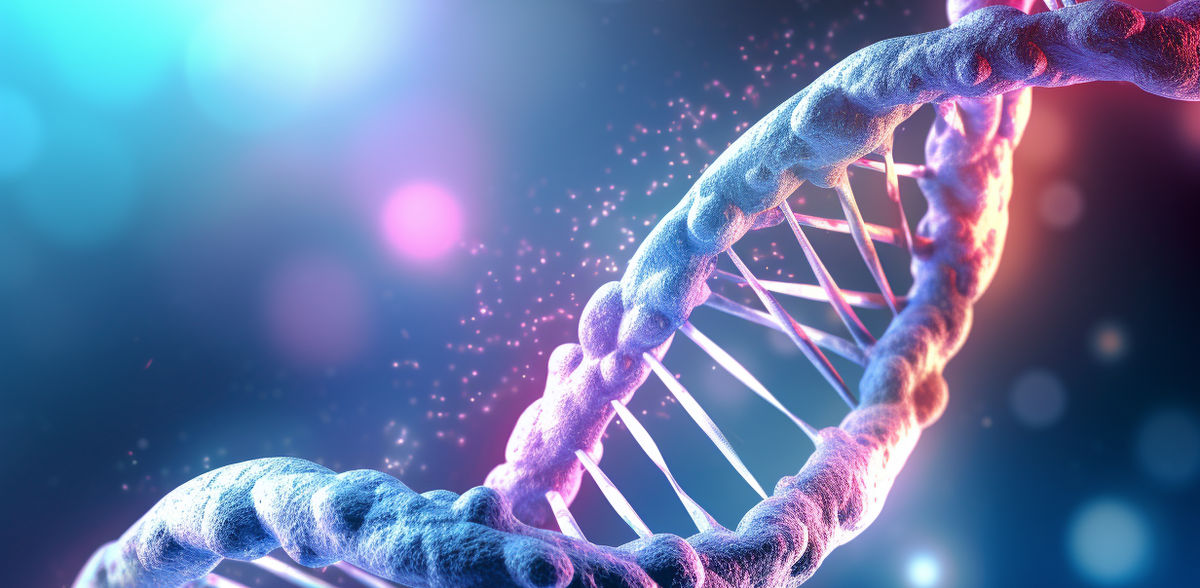A new tool to study complex genome interactions
“I was super excited to see that we had uncovered a really strong effect”
Genome Architecture Mapping captures complex, multi-way interactions in the genome. This is different than the workhorse technique of 3D genomics, which sees mostly two-way contacts, finds a new study by a team led by Ana Pombo from the Max Delbrück Center, published in “Nature Methods”.
People who owned black-and-white television sets until the 1980s didn’t know what they were missing until they got a color TV. A similar switch could happen in the world of genomics as researchers at the Berlin Institute of Medical Systems Biology of the Max Delbrück Center (MDC-BIMSB) have developed a technique called Genome Architecture Mapping (“GAM”) to peer into the genome and see it in glorious technicolor. GAM reveals information about the genome’s spatial architecture that is invisible to scientists using solely Hi-C, a workhorse tool developed in 2009 to study DNA interactions, reports a new study in “Nature Methods” by the Pombo lab.
“With a black-and-white TV, you can see the shapes but everything looks grey,” says Professor Ana Pombo, a molecular biologist and head of the Epigenetic Regulation and Chromatin Architecture lab. “But if you have a color TV and look at flowers, you realize that they are red, yellow and white and we were unaware of it. Similarly, there’s also information in the way the genome is folded in three-dimensions that we have not been aware of.”
Understanding DNA organization can reveal the basis of health and disease. Our cells pack a 2-meter-long genome into a roughly 10 micrometer-diameter nucleus. The packaging is done precisely so that regulatory DNA comes in contact with the right genes at the right times and turns them on and off. Changes to the three-dimensional configuration can disrupt this process and cause disease.
“We’ve known for a long time that diseases run in families,” says Dr Robert Beagrie, co-first author of the study and a molecular biologist at the University of Oxford, formerly at the Pombo lab. “More recently, we’ve come to understand that a great deal of this predisposition is because we inherit DNA sequence variants from our parents that affect how our genes are switched on and off.”
GAM provides more complex information
Techniques such as Hi-C and GAM allow scientists to freeze and study the interactions between regulatory sequences and genes. In Hi-C, chromatin is cut into pieces using enzymes and then glued together again in such a way that two-way DNA interactions are revealed upon sequencing. In GAM, first described by the Pombo team in “Nature” in 2017, scientists take hundreds of thin slices of nuclei, each from individual cells, and extract DNA from them. They sequence the DNA and statistically analyze the data to learn which regions interact.
Combining the new GAM data, as well as powerful computational and statistical models developed by the team, provides access to deeper information about how our genome is organized and regulated. “In this way, we can derive the probability that in a single cell a given set of DNA sites such as a pair, a triplet, etc., do come together from large genomic distances,” says Professor Mario Nicodemi, a physicist co-author of the paper from the University of Naples “Federico II” and Einstein BIH Visiting Professor at the Max Delbrück Center.
Using this technique, the team created a map of the three-dimensional interactions. When they compared this with existing 3D maps of the genome created using Hi-C, they found many novel interactions. This puzzled them until they realized they were seeing more complex interactions using GAM, with multiple regions of DNA coming together at the same time. “These more complex contacts contain active genes, regulatory regions, and super enhancers, which regulate important genes that determine cell identity,” says Dr. Christoph Thieme, co-first author of the study and a senior postdoctoral fellow in the Pombo lab.
In comparison, Hi-C captured mostly two-way interactions. Both techniques are complementary as two in three contacts detected by GAM were not visible using Hi-C — and vice-versa.
“I was super excited to see that we had uncovered a really strong effect,” Beagrie says. “It is clear that these complex interactions were much more common than we had previously appreciated.”
























































